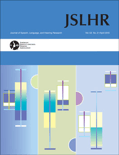
JOURNAL OF SPEECH LANGUAGE AND HEARING RESEARCH
Scope & Guideline
Connecting knowledge to practice in health services.
Introduction
Aims and Scopes
- Speech and Language Development:
Focuses on the processes and factors influencing typical and atypical speech and language development across different age groups, including children with developmental language disorders. - Hearing Disorders and Rehabilitation:
Explores various aspects of hearing loss, including assessment techniques, interventions like cochlear implants, and the impact of hearing loss on communication and social interactions. - Voice Disorders and Assessment:
Investigates vocal function, including the assessment and treatment of voice disorders, the effects of interventions, and the relationship between vocal quality and communicative effectiveness. - Cognitive and Neurophysiological Aspects:
Examines the cognitive processes involved in speech and language, including working memory, attention, and the neural correlates of language processing and disorders. - Bilingualism and Multicultural Perspectives:
Addresses the complexities of speech and language in bilingual and multilingual contexts, including language acquisition, code-switching, and cultural influences on communication. - Technological Innovations in Assessment and Intervention:
Incorporates advances in technology, such as telepractice, automated speech analysis, and virtual interventions, to enhance the assessment and treatment of speech and hearing disorders.
Trending and Emerging
- Telepractice and Remote Interventions:
The COVID-19 pandemic has accelerated the adoption of telepractice, leading to a surge in research exploring the effectiveness of remote assessment and intervention methods for speech and language disorders. - Interdisciplinary Research Approaches:
There is a growing trend toward interdisciplinary research that combines insights from fields such as cognitive science, psychology, and neuroscience to better understand speech and language processes. - Focus on Mental Health and Communication:
An increasing number of studies are addressing the intersection of mental health and communication, particularly how conditions like anxiety and depression affect speech and language outcomes. - Technological Integration in Therapy:
Research exploring the integration of technology, such as apps and AI, in speech therapy and language learning is rapidly gaining traction, highlighting the importance of innovative tools in modern interventions. - Cultural and Linguistic Diversity:
There is an emerging emphasis on culturally responsive practices and the study of speech and language disorders in diverse populations, reflecting a more inclusive approach to research and intervention.
Declining or Waning
- Traditional Diagnostic Methods:
There has been a noticeable decrease in studies relying solely on traditional diagnostic methods for assessing speech and language disorders, as newer, more innovative techniques gain prominence. - Generalized Treatment Approaches:
Research focusing on generalized treatment protocols without consideration for individual differences and specific needs of diverse populations is becoming less frequent. - Single Modality Interventions:
There is a waning interest in single modality interventions (e.g., only speech therapy) as multidisciplinary and integrative approaches that combine various forms of therapy become more favored. - Focus on Adult Populations:
Research specifically targeting adult populations with speech and language disorders is declining, possibly overshadowed by a growing emphasis on pediatric populations and developmental issues. - Descriptive Studies Without Intervention:
Studies that primarily focus on descriptive analyses without proposing or testing interventions are becoming less common, as the field shifts towards evidence-based practice and applied research.
Similar Journals
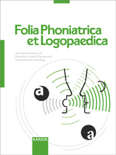
FOLIA PHONIATRICA ET LOGOPAEDICA
Advancing Communication Sciences for Tomorrow's InnovatorsFOLIA PHONIATRICA ET LOGOPAEDICA, published by KARGER in Switzerland, stands as a premier journal in the fields of linguistics, phonetics, and speech therapy. With a rich history beginning in 1949 and spanning multiple decades, this esteemed journal has maintained a commitment to advancing research and scholarship in communication sciences, covering crucial topics relevant to both clinical practice and theoretical frameworks. Holding a prestigious Q1 ranking in Linguistics and Language, the journal also achieves high standings in related categories, with notable placements in Speech and Hearing and Nursing. Researchers, professionals, and students will find the insights and findings published within its pages to be invaluable for both academic pursuits and practical applications. Access options are available through traditional subscription models, enhancing its accessibility for dedicated scholars seeking to contribute to or expand their knowledge in this dynamic field.
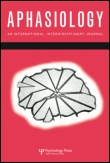
APHASIOLOGY
Fostering Innovative Research in Speech and Language PathologyAPHASIOLOGY is a leading international journal, published by Routledge Journals, Taylor & Francis Ltd, dedicated to the advancement of knowledge in the fields of linguistics, neurology, and communication disorders. With a strong emphasis on interdisciplinary research, the journal spans a wide array of topics related to language processing, aphasia, and associated cognitive functions. Having achieved notable rankings in multiple categories, including Q1 in Linguistics and Language and Q2 in Neurology, APHASIOLOGY boasts an impressive presence in the academic community, reflected in its prestigious Scopus rankings across various fields. Operating without an open access model, the journal ensures rigorous peer-review standards are upheld, promoting high-quality research disseminated to scholars and practitioners alike. As it converges from its inception in 1987 to future milestones set for 2024, APHASIOLOGY remains a vital resource for researchers, healthcare professionals, and students pursuing advanced studies in speech and language pathology, cognitive neuroscience, and related disciplines, effectively addressing the complexities of language and communication through research and scholarship.
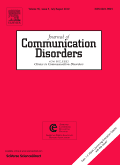
JOURNAL OF COMMUNICATION DISORDERS
Pioneering Insights into Communication Challenges.Journal of Communication Disorders (ISSN: 0021-9924; E-ISSN: 1873-7994) is a leading publication in the field of communication disorders, published by Elsevier Science Inc. With a converged publishing timeline from 1967 to 2024, this journal has established itself as a vital resource for researchers, clinicians, and educators dedicated to advancing knowledge in areas such as linguistics, language processing, speech, and hearing. It boasts an impressive reputation, ranking in the Q1 category for Linguistics and Language, and Q1 in LPN and LVN as well as Q2 in Speech and Hearing for 2023, highlighting its influence and scholarly impact within these domains. The journal is recognized for its rigorous peer-reviewed articles and its contributions to our understanding of cognitive neuroscience, experimental psychology, and communication disorders—further evidenced by its ranking in the top percentiles in various fields. Although it does not currently offer Open Access options, readers and contributors alike will appreciate the depth and breadth of research published within its pages. This journal serves an essential role in bridging the gap between research and practical application, making it a must-read for anyone involved in the study or treatment of communication disorders.
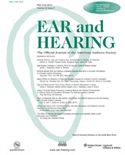
EAR AND HEARING
Advancing auditory science for a healthier tomorrow.EAR AND HEARING, published by LIPPINCOTT WILLIAMS & WILKINS, is a premier journal dedicated to advancing the fields of Otorhinolaryngology and Speech and Hearing. With an ISSN of 0196-0202 and an E-ISSN of 1538-4667, this prestigious journal has established itself as a leading resource for researchers and clinicians alike since its inception in 1980. As of 2023, it proudly occupies Q1 quartile positions in both Otorhinolaryngology and Speech and Hearing, reflecting its influence and impact in the scientific community, further underscored by its exceptional Scopus rankings—#1 in Speech and Hearing and #9 in Otorhinolaryngology. Although it does not offer Open Access options, EAR AND HEARING remains an invaluable repository of cutting-edge research, reviews, and clinical insights that aim to enhance understanding and treatment of auditory and vestibular disorders. Its relevance is amplified by a comprehensive scope that encompasses innovative clinical practices and fundamental research, making it an essential read for researchers, professionals, and students dedicated to improving auditory health.

Audiology Research
Fostering Collaboration in the World of AudiologyAudiology Research, published by MDPI, is a reputable open-access journal since 2011, dedicated to advancing the field of audiology through the dissemination of high-quality research. With ISSN 2039-4330 and E-ISSN 2039-4349, the journal serves a global audience from its base in Basel, Switzerland, and operates under rigorous peer-review standards to ensure the integrity of published content. With a 2023 Impact Factor placing it in the Q2 category for both Otorhinolaryngology and Podiatry, Audiology Research has established itself as a significant platform for researchers, professionals, and students seeking to explore various aspects of hearing science, auditory disorders, and rehabilitative practices. Its commitment to open access fosters wider dissemination and accessibility of research findings, thereby promoting interdisciplinary collaboration and enhancing patient outcomes within the audiology community. The journal's alignment with major indexing databases, alongside its Scopus ranks—#4 in Health Professions: Podiatry and #65 in Medicine: Otorhinolaryngology—reflects its growing influence and dedication to impactful contributions in the health sciences.
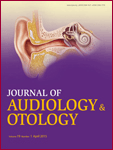
Journal of Audiology and Otology
Elevating the standards of auditory health and knowledge.The Journal of Audiology and Otology, published by the Korean Audiological Society, is a prominent peer-reviewed journal that seeks to advance the fields of audiology and otolaryngology. With its ISSN 2384-1621 and E-ISSN 2384-1710, this journal has carved out an important niche since its inception in 2016 and continues to contribute valuable research insights through to 2024. Focused on a range of topics including hearing disorders, audiological assessments, and innovations in surgical practices, the journal is categorized within the Q3 quartile in Otorhinolaryngology and has attained recognition across various related fields, achieving a Q2 ranking in Speech and Hearing. As an essential platform for professionals, researchers, and students devoted to the study of auditory and sensory systems, the Journal of Audiology and Otology is especially significant given its active engagement with the latest clinical practices and theoretical advancements in South Korea and beyond. Although it operates under a traditional access model, its rich content positioned at the intersection of clinical application and research remains critical for fostering development in the auditory sciences.

Auditory and Vestibular Research
Unveiling Insights in OtorhinolaryngologyAuditory and Vestibular Research is an esteemed open-access journal published by Tehran University of Medical Sciences, dedicated to advancing the field of otorhinolaryngology and speech and hearing sciences. Established to foster scholarly communication, this journal has gained traction since its inception and has been openly accessible since 2015, encouraging a wider dissemination of research findings. With an E-ISSN of 2423-480X, it features a diverse range of studies and reviews that reflect the latest advancements and methodologies in auditory and vestibular functioning. As of 2023, the journal is ranked Q3 in both Otorhinolaryngology and Speech and Hearing categories, indicating a growing significance within the academic landscape, especially among researchers and healthcare professionals focusing on auditory health. By publishing quality research and facilitating dialogue within the community, Auditory and Vestibular Research plays a crucial role in informing practice and enhancing knowledge in these vital areas of medicine.
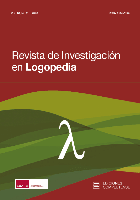
Revista de Investigacion en Logopedia
Exploring the forefront of language studies and speech research.Revista de Investigacion en Logopedia is a premier open-access journal published by Universidad de Castilla-La Mancha, dedicated to advancing research in the fields of linguistics, language studies, and speech pathology. Since its inception in 2011, this journal has provided a platform for researchers and professionals to share innovative findings, contributing significantly to the development of the speech and hearing disciplines. With an impressive Q2 ranking in Linguistics and Language and a prominent Q4 ranking in Speech and Hearing for 2023, it sits at the confluence of academic research and practical application. Additionally, it has achieved commendable Scopus rankings, indicating its impact and relevance in the academic community. Open-access from the beginning, this journal ensures that its valuable content is accessible to a broader audience, promoting collaboration and knowledge sharing across international borders. Whether you're a researcher, a clinician, or a student, Revista de Investigacion en Logopedia is an essential resource for staying updated with the latest developments and insights in logopedia.
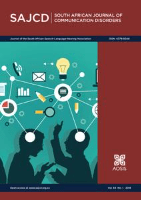
SOUTH AFRICAN JOURNAL OF COMMUNICATION DISORDERS
Bridging Gaps in Communication ScienceSOUTH AFRICAN JOURNAL OF COMMUNICATION DISORDERS, published by AOSIS, is a prominent peer-reviewed journal dedicated to advancing research in communication disorders. With its ISSN 0379-8046 and E-ISSN 2225-4765, this open-access journal has been providing a platform for innovative research since 2010, facilitating the dissemination of knowledge within the South African context and beyond. Its scope encompasses various fields, achieving notable rankings such as Q1 in Linguistics and Language and Q2 in Communication for 2023, highlighting its strong commitment to quality research. The journal has successfully converged its publication years from 1977 to 2024, reflecting its longstanding contribution to the discipline. Researchers and professionals in fields such as cognitive neuroscience, linguistics, and speech and hearing will find this journal an invaluable resource for staying ahead of current trends and developments. As it continuously seeks to bridge gaps in communication disorder research, the journal aims to foster collaboration and innovation within the academic community.
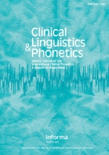
CLINICAL LINGUISTICS & PHONETICS
Exploring the Intersection of Communication and CareClinical Linguistics & Phonetics, published by Taylor & Francis Inc, is a leading peer-reviewed journal that occupies a pivotal role in advancing the fields of linguistics and speech-language pathology. With its ISSN 0269-9206 and E-ISSN 1464-5076, this journal has been instrumental since its inception in 1987, providing an esteemed platform for research that addresses the intersection of language and health. Holding a prestigious Q1 ranking in Linguistics and Language and a solid Q2 rank in Speech and Hearing as of 2023, it is well-regarded for its rigorous standards and impactful research contributions. The journal does not currently offer open access options, yet it remains accessible to a broad academic audience that values quality scholarship. By disseminating vital empirical studies and theoretical advancements, Clinical Linguistics & Phonetics not only enriches the academic discourse but also supports professionals seeking to enhance their practice based on the latest evidence in communication disorders and phonetic research.